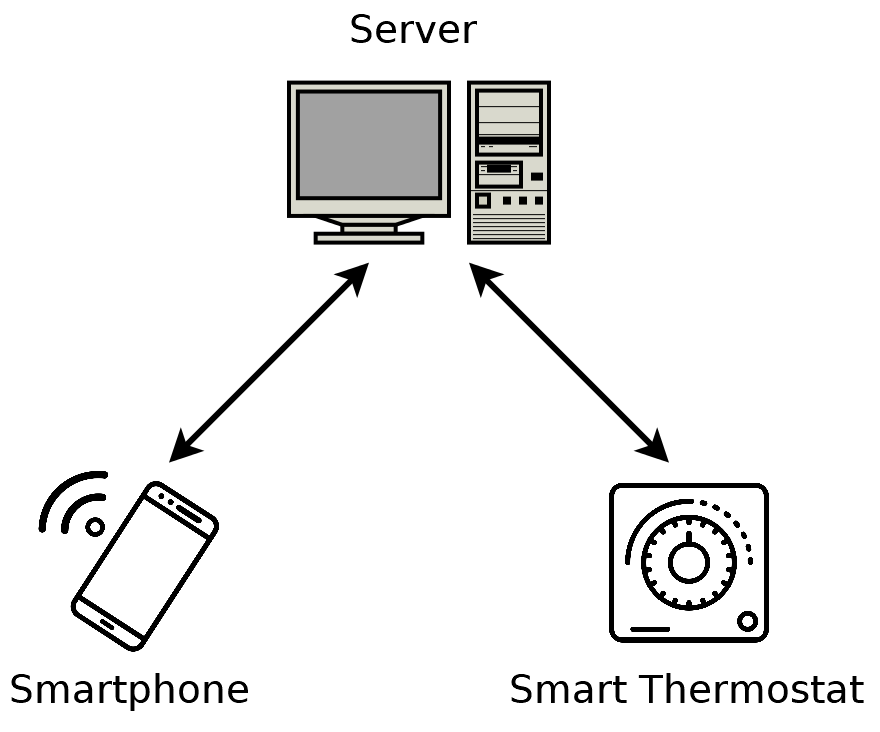Most IoT devices work by sending their data to a few central servers—the cloud. These servers process and store the IoT device data and allow remote access and configuration.
For example, take a smart thermostat. It continuously sends temperature data to a central server. This server stores the data. If a user wants to view the data, they connect their personal computer or smartphone to that central server. They don't connect directly to the IoT device itself. When they want to change their thermostat settings, they send this change to the central server, which then relays it to the IoT thermostat.
The following diagram illustrates this concept:

In the preceding diagram, note that all communication goes through the server. There is never direct communication from the smartphone to the IoT device.
Using a central server has several advantages. It allows the IoT device to do much less processing. The server can further process that data and format it into graphs and such. The server can also send emails or other alerts, and the server is able to store much more data than the IoT device is capable of. Furthermore, the server gives both the IoT device and the user's device (a laptop or smartphone) a place to connect to. Without a central server, getting the user's device to connect to the IoT device would be its own challenge.
The actual protocols used by IoT devices vary. Many devices use HTTPS. In these cases, the device usually requests an HTTPS page while passing collected data. The web server will then collect the data and return any needed information to the IoT device.
There are a few protocol standards aimed specifically for IoT devices, such as Constrained Application Protocol (CoAP) and Message Queuing Telemetry Transport (MQTT).
However, custom designed TCP and UDP protocols are also common. These custom protocols can achieve a much higher level of efficiency where bandwidth is a concern.
Perhaps we will see more protocol standardization in the coming years. This could have an enormous advantage in allowing devices to better interoperate. As it is now, devices rarely interoperate with devices from different manufacturers.
Another important consideration when deploying an IoT device is how to update the code after the device is shipped.